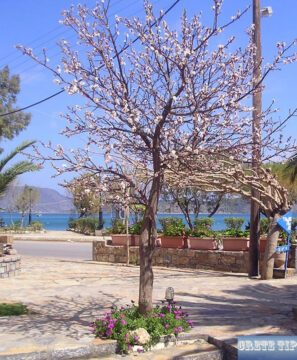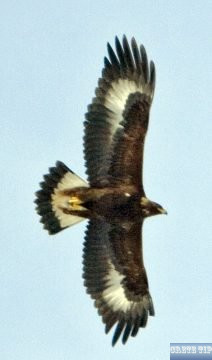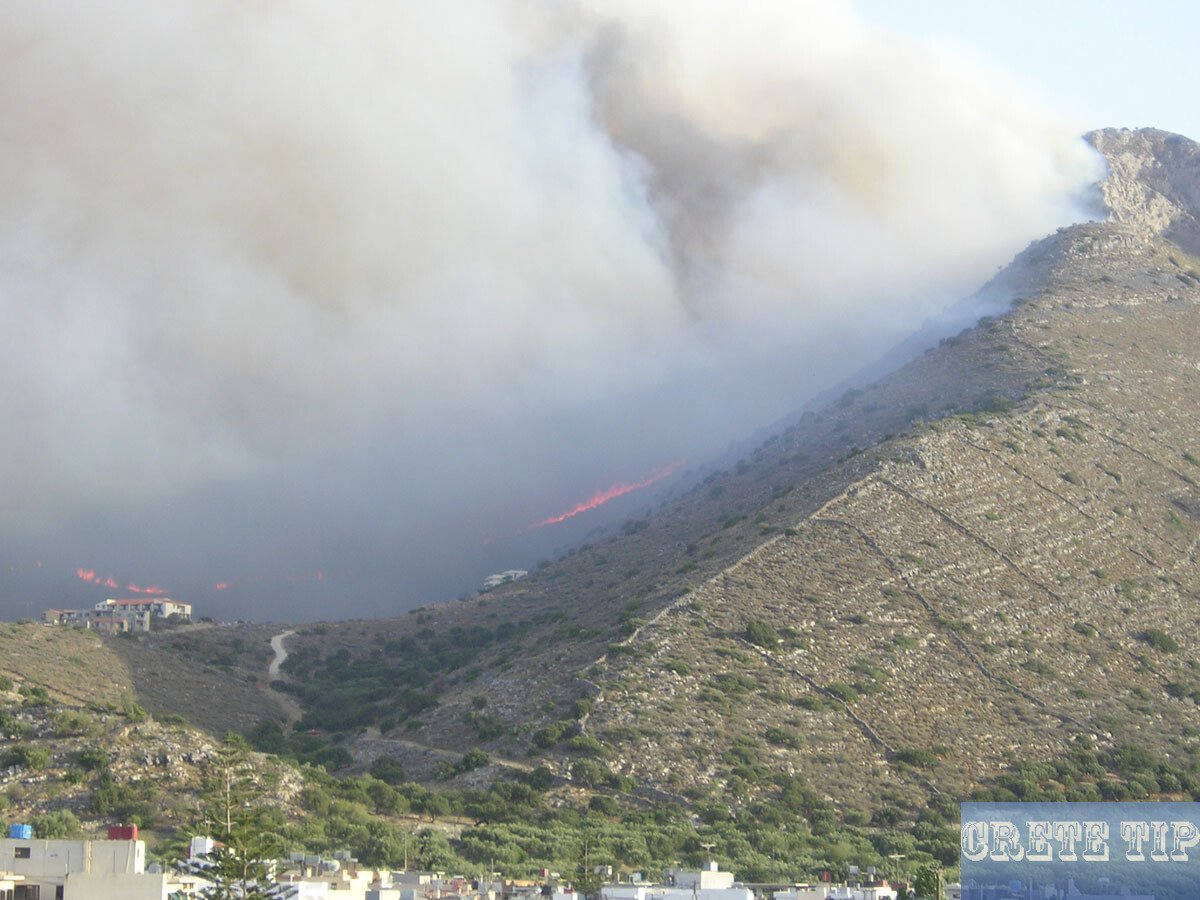The nature of Crete.
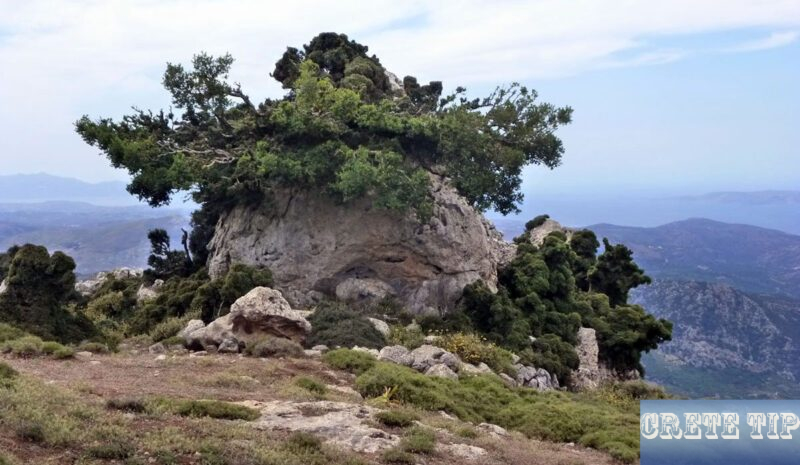
Flowers and birds on the largest island of Greece.
Flowers
What flowers you can discover on Crete, of course, depends on the season in which you travel. The best time is spring, which usually begins in January on the island. At this time, the almond tree blossoms, raining its petals like snow and covering the streets of the small mountain villages.
In the southeast of the island the spring season begins in mid-February, in the lowlands it reaches its peak in March and lasts until April. In the mountains, it takes a little longer to start from the end of April, but continues until June.
In early summer, the spring anemones, orchids and rock roses are replaced by plants such as broom and chrysanthemums. This period lasts from mid-April in the south of Crete to the end of July in the high mountains, although the exact timing can vary by up to a month depending on the prevailing climate and weather.
Once the hot summer is over, the blooming season begins anew. Some of the fall-blooming species, such as cyclamen and autumn crocus, bloom from October in the mountains until December in the south of the island. And then you can wait again for the first spring bulbs in January.
All year round, hiking up and down the hills is the best way to find flowers. From early March to late June, you’re virtually guaranteed to find classic blooms somewhere on the island, and the less spectacular but still rewarding fall-blooming species can be seen from October to early December.
If you’re traveling in July, August, or September, also please be prepared to see a limited selection, and also to hike high into the mountains. The four habitats of Crete all have their own flower types, although some overlap, of course.
Flower types
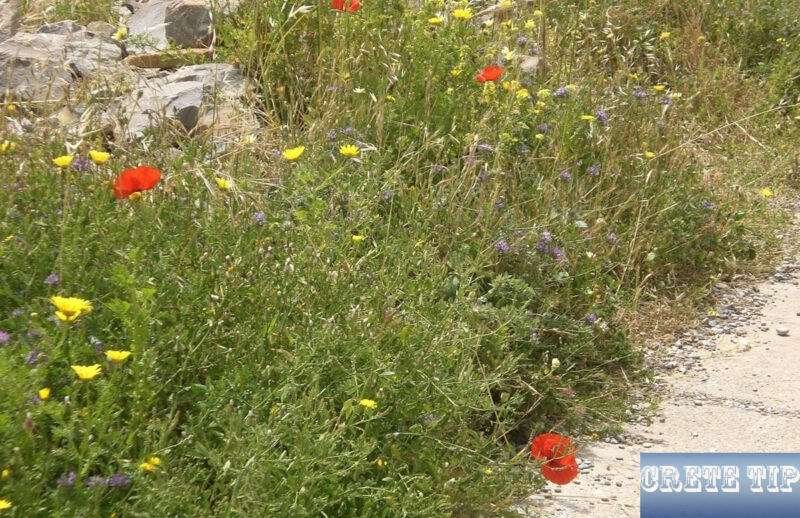
On the shore, you may find the spectacular yellow horned poppy growing on shingled banks, and sea canes and Virginia canes growing among the rocks behind the beach.
Sand dunes are rare, but sometimes there is a flat, grazed area behind the beach; these are often good for orchids. In the fall, look for the very large white flowers of the sea daffodil, as well as fall crocuses on the shores behind the coast.
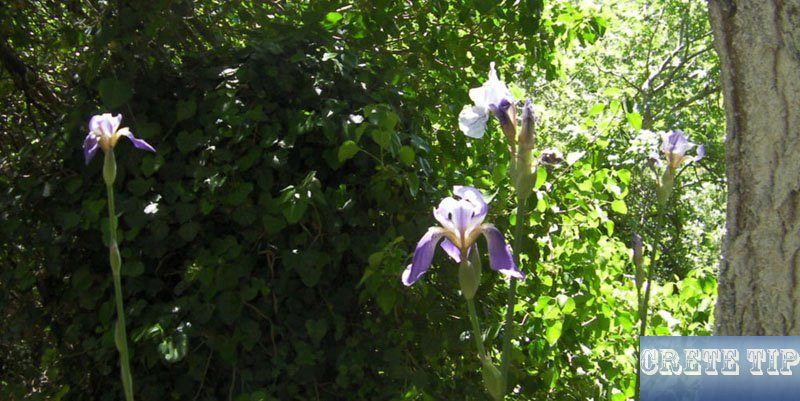
The trees and shrubs on the low slopes are varied and beautiful, with colorful broom flowers in early summer preceded by bushy rock roses – Crustacea – that form a mass of pink or white flowers in spring.
The non-deciduous sycamore is an endemic variety, and the Judas tree blooms in spring on bare wood, its pink color standing out for miles against the green slopes. Lower than the shrubs are the aromatic herbs – sage, rosemary, thyme and lavender – perhaps with some spiny Euphorbia species.
Since Crete is dry and hot most of the year, there is also a high proportion of xerophytes; plants adapted to drought by having fleshy leaves and thick skins.
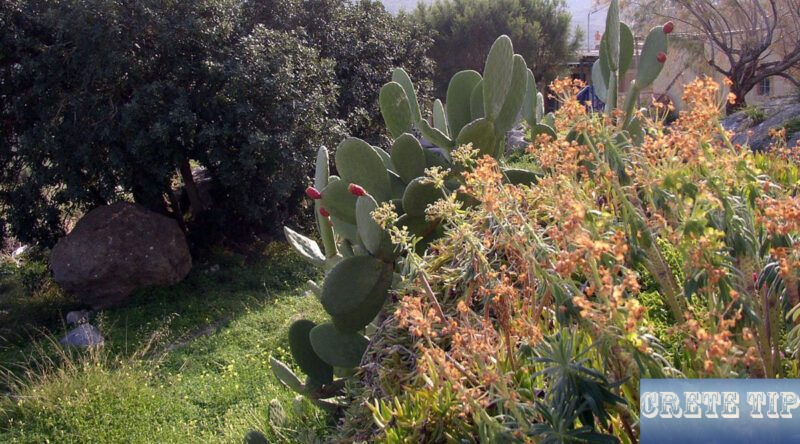
Below the herbs is the soil layer. Looking around the edges and among the shrubs, you will find an abundance of orchids, anemones, grape hyacinths, and irises; and if you are lucky, perhaps even fritillaries.
The orchids are exceptional; some species like the Ophrys have particularly fascinating and unusual flowers.
Once spring is over, these plants give way to early summer broom plants, gorse, and aromatic herbs, as well as a final burst of annuals that sense the coming of the heat and their own death.
When the heat of summer is over, the autumn bulbs appear, with species of crocus and their relatives, the colchicum and the starbergia. Close occur until early December, autumn alpine violets.
The mountains are well populated by flowers even later in the year. The rocky mountain gorges are considered the preferred environments for plants and are home to the greatest diversity of species.
This is because most gorges are generally ungrazed and undisturbed by sheep or goats, and it is often easy to find at least ten Cretan endemics without too much difficulty. The gorges are home to many familiar garden rock plants, such as aubretias, saxifrages and ayssums, as well as dwarf bellflowers and anemones.
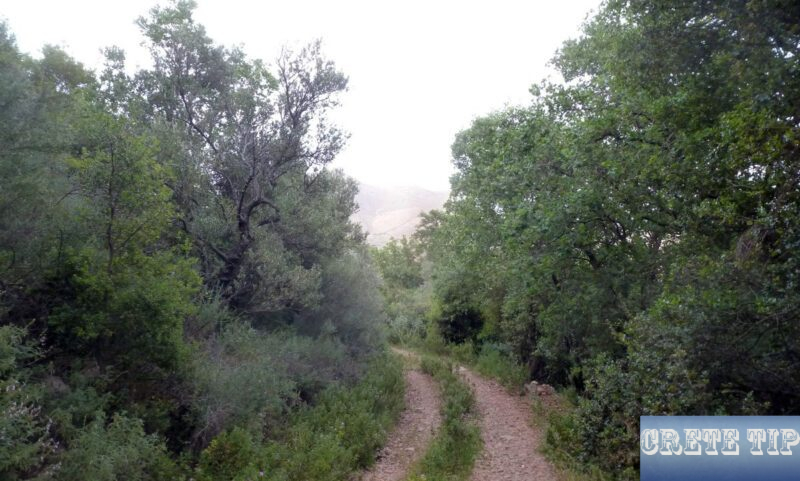
In spring, look for dwarf tulips in fields on the plateaus. In the mountains you can also see the remaining native Greek pine forests and in the glades you will find gentians, cyclamen and violets.
Above about 5,000 ft the forests begin to thin out and in these high mountain meadows magnificent crocuses bloom, almost before the snow melts in the spring. A very beautiful form of Crocus Seiberi appears especially early.
Autumn blooming species of crocus and cyclamen and should also reward a visit later in the year.
Birds
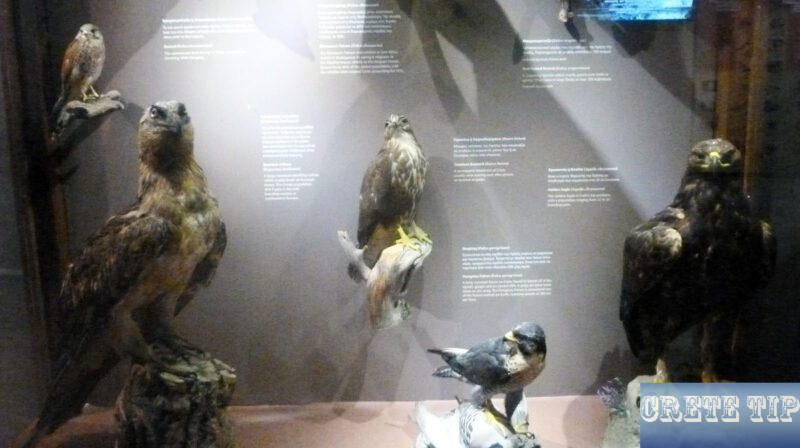
More than 330 species of birds have been recorded to date in Crete. The whole of Greece has a wide range of Mediterranean species. In addition, there are some rare birds, such as the Eleanora’s hawk and the Ruppell’s warbler, which have their European breeding strongholds in Greece, especially in Crete.
The great thing about birding in Crete is that if you time it right, you can see both resident species and migratory birds passing through.
Crete is on one of the main flyways for species that winter in East Africa but breed in Eastern and Northern Europe. They migrate up the Nile Valley each spring and then move across the eastern Mediterranean, often in large numbers.
This occurs from mid-March to mid-May, depending on the species, the weather, and where you are. The return migration in the fall is less spectacular because it is far apart in time, but it is still worth keeping an eye on.
There are some colorful residents on the outskirts of town and in the fields. Small birds of prey such as red-headed shrikes, wheatears, kestrels and migrating red-footed hawks can be seen on telephone wires.
The dramatic pink-black-and-white hoopoe and the showy yellow-and-black oriole are sometimes found in forests and olive groves, and scops owls – the smallest owl in Europe – can often be heard calling near towns at night. They monotonously repeat a single ‘poo’, sometimes in plaintive song duets.
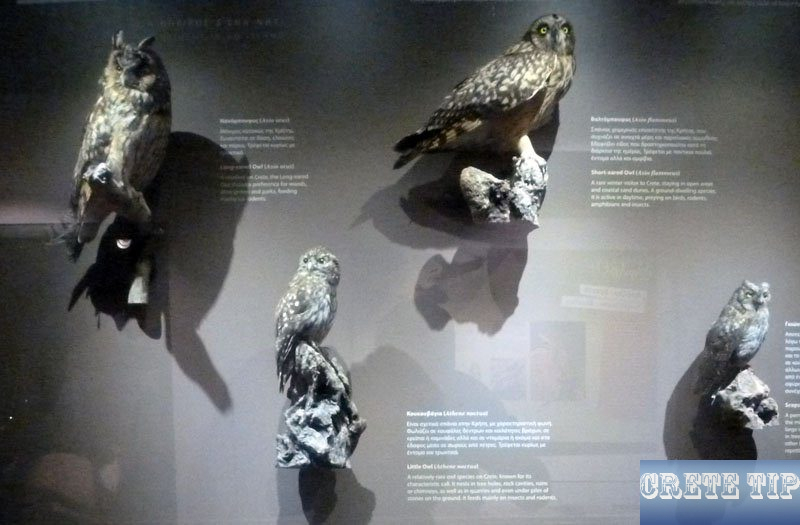
If you take a closer look at the swifts and swallows, you will find some species that are not found in Northern Europe. For example, there are cliff swallows instead of house martins in the mountain gorges, or maybe you will spot the large alpine swift, which has a white belly.
Rough, brushy slopes are dominated by the velvet-crowned warbler – the male with a shiny black cap and a striking red eye. These slopes are also home to the chukar, a partridge species similar to the red grouse found in Western Europe.
Wetlands and coastal lagoons are excellent for bird watching, especially during spring and autumn migration. In Crete, however, such habitats are difficult to find. There is a wide variety of herons, as well as smaller wading birds such as the rare avocet, marsh sandpiper and black-winged wagtail, which has ridiculously long pink legs.
Marsh harriers are also common, gliding over the marshes with their characteristic raised wings.
The scrub-covered forests around the coastal wetlands are a good place to see smaller migratory birds such as warblers, wagtails and the like.
The mountains host some of Crete’s most exciting birds. Smaller birds such as the imperial thrush, lemon finch and alpine chough make frequent appearances and there are more frequent opportunities to see the large and dramatic looking birds of prey.
The buzzards and smaller eagles are confusingly similar, but there are also golden eagles, Bonelli’s eagles and vultures, including the griffon vulture and black vulture.
However, it can be easily identified, as it shows a slow, circling flight path in the sky. It keeps its long and broad wings raised in a V-shape. Younger specimens have extensive white feathers on the wings and tail, they later become smaller and smaller and then disappear altogether.
Golden eagle hunts mainly wild chickens, crows, hares, rabbits and marmots. It swoops down on its prey from low heights. However, it also eats carrion, such as dead sheep, chamois and deer.
A rare vulture species is the lammergeier or bearded vulture, which is now on the currently dramatically growing list of endangered species, although it used to be more common on Crete than anywhere else in Europe. If you are very lucky, you can spot one of the twenty or so remaining birds at high altitude. Among them there are only four breeding pairs, and they mainly hover over the Lasithi Plateau or the Omalos plateu.
It is a huge bird, with a wingspan of almost 10 feet and with narrower wings and a longer wedge-shaped tail than the other vulture that you are much more likely to see, the griffon vulture.
Birdwatching

The avifauna of Crete is particularly important and includes many migratory bird species, but also species that live permanently on the island and reproduce here.
Dominant among these are the large birds of prey in the mountain ecosystems of Crete (eagles, vultures, etc.), which maintain important and healthy populations: Moreover, 26 of Crete’s 54 NATURA 2000 sites have been designated as Special Protection Areas for birds (SPA’s), and fourteen of them are located in the mountains, at altitudes above 2,300 ft, which underlines the importance of the mountains for the conservation of rare bird species.
This means, Crete is a fantastic destination for birdwatching enthusiasts, offering a diverse array of bird species across various habitats. The island boasts over 415 different bird species, including both resident and migratory birds.
The island’s varied landscape provides numerous excellent birdwatching locations:
Mountains: The mountains of Crete, including Idi, Lefka Ori, and Dikti, are home to some of the most exciting bird species, such as the blue rock thrush and cirl bunting.
Coastline: Both rocky and sandy coastal areas are ideal for spotting migrants and winter visitors. The coastline west of Chania is particularly popular among birdwatchers.
Gorges: The famous Samaria Gorge offers excellent opportunities for birdwatching, along with other gorges like Imbros and Richtis.
Wetlands: Lake Aghia is a notable spot for birdwatching, especially for water birds.

Plateaus: The Omalos plateau is another prime location for bird enthusiasts.
Some of the rare and endangered species you might encounter include the Bearded Vulture and Eleanora’s Falcon. Other notable species are the Golden Eagle, Bonelli’s Eagle, and various warblers like the Sardinian Warbler.
For the best birdwatching experience, consider visiting Crete during the migration seasons (spring and autumn) when you can observe both resident and migratory species. Winter is also an excellent time to spot many birds in the fields and hilly areas, while the mountains and plateaus are favored in summer.
Remember to bring appropriate gear, including binoculars, a field guide, and comfortable walking shoes, as many of the best birdwatching spots require some hiking.

